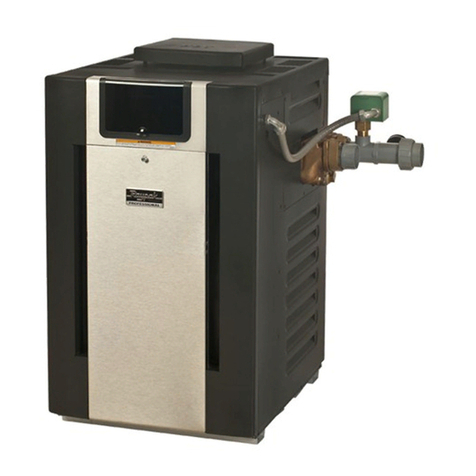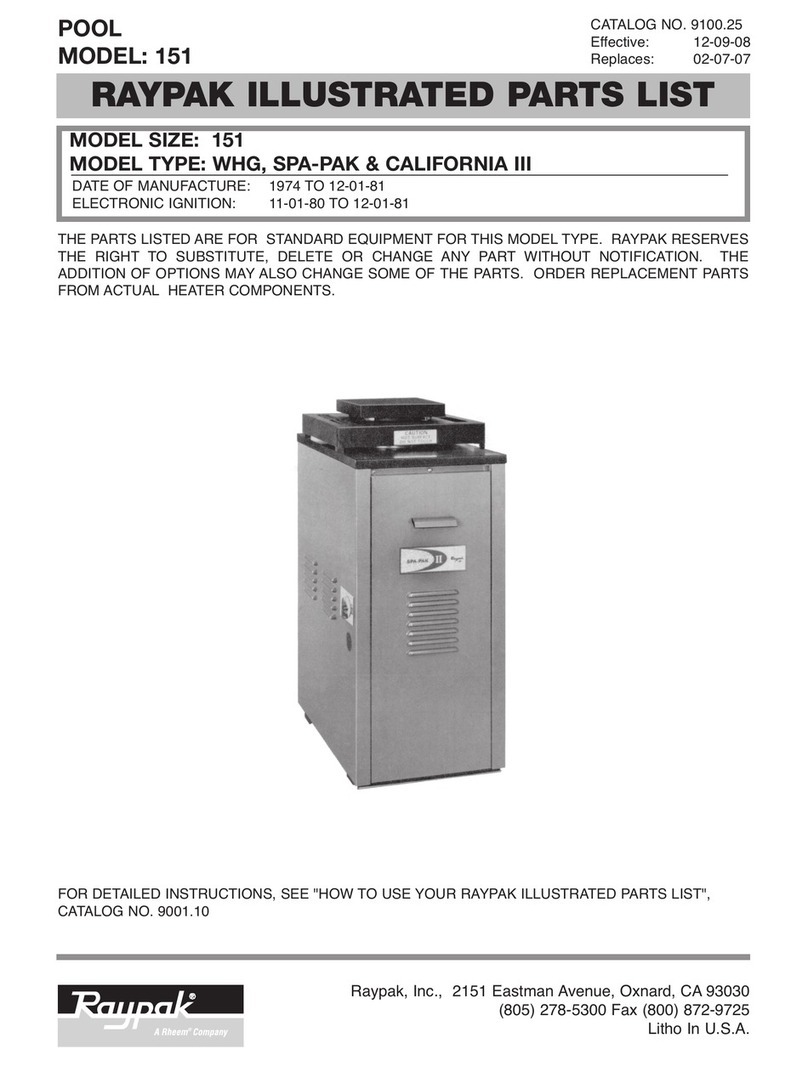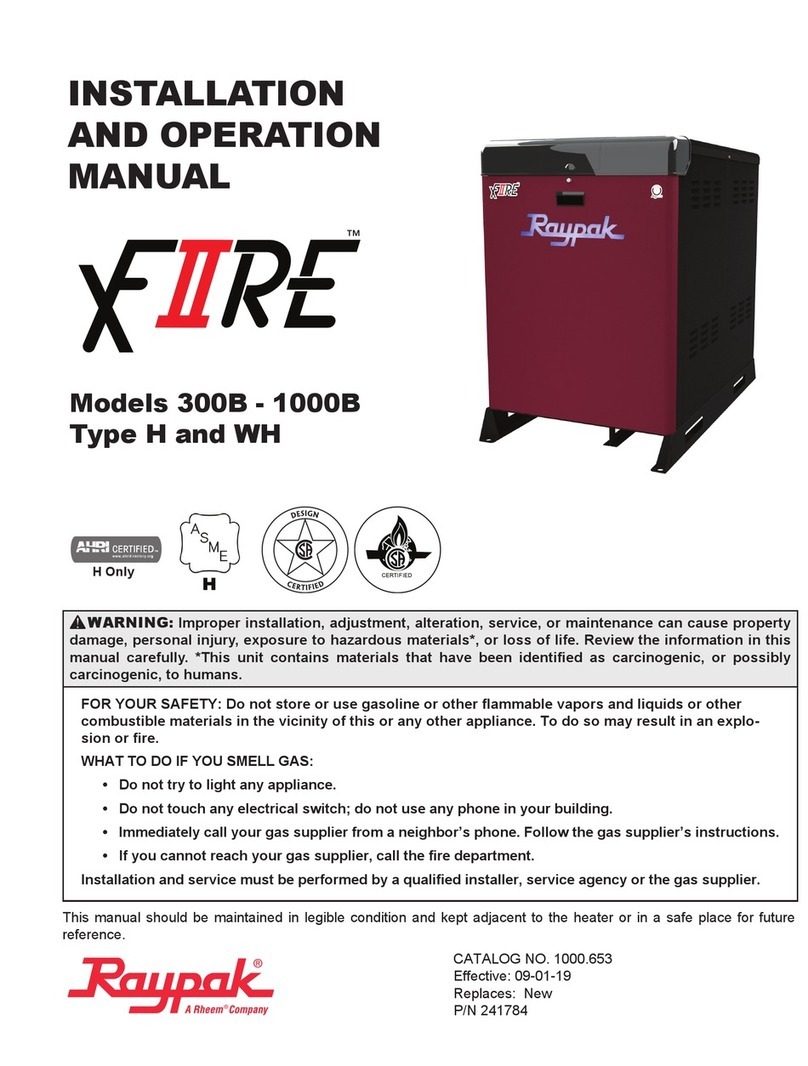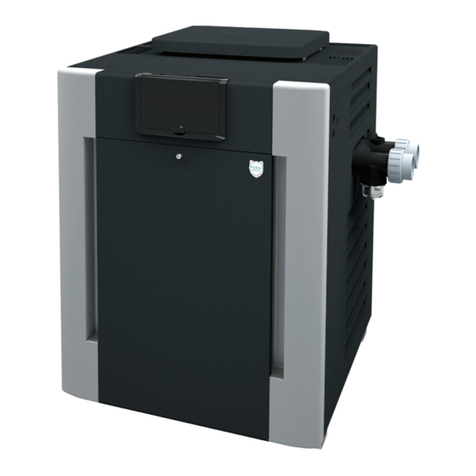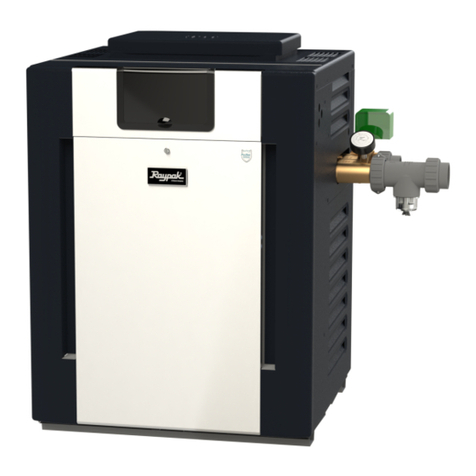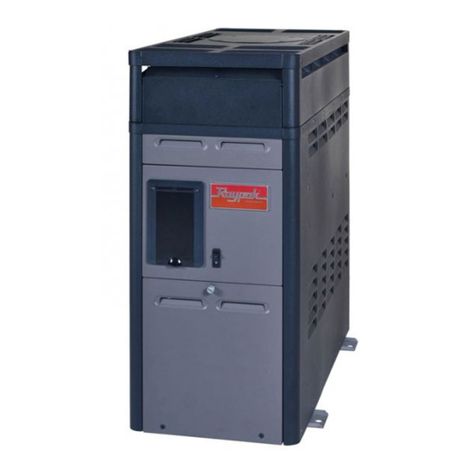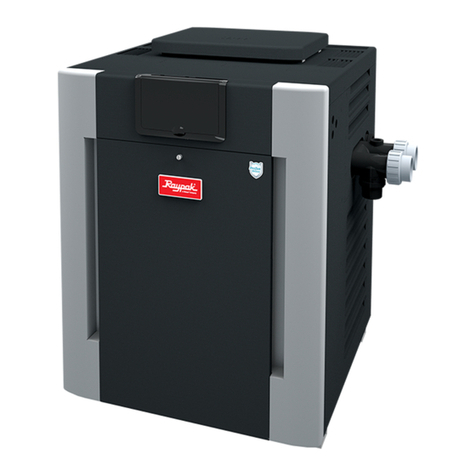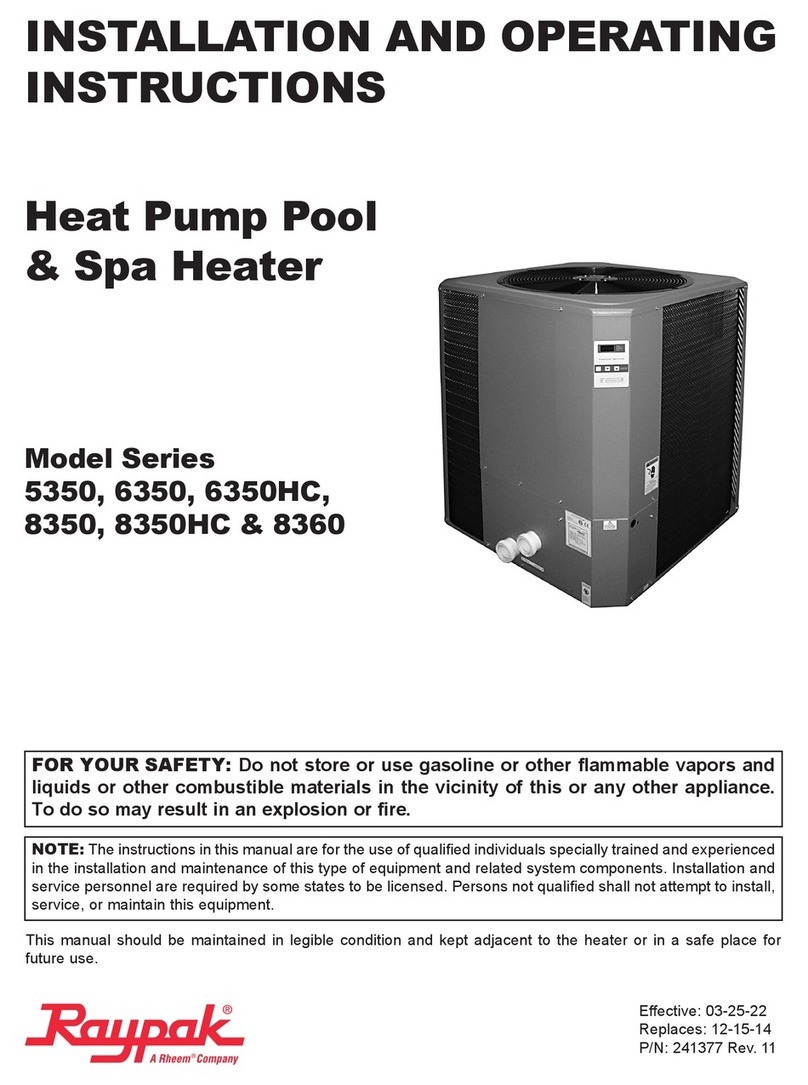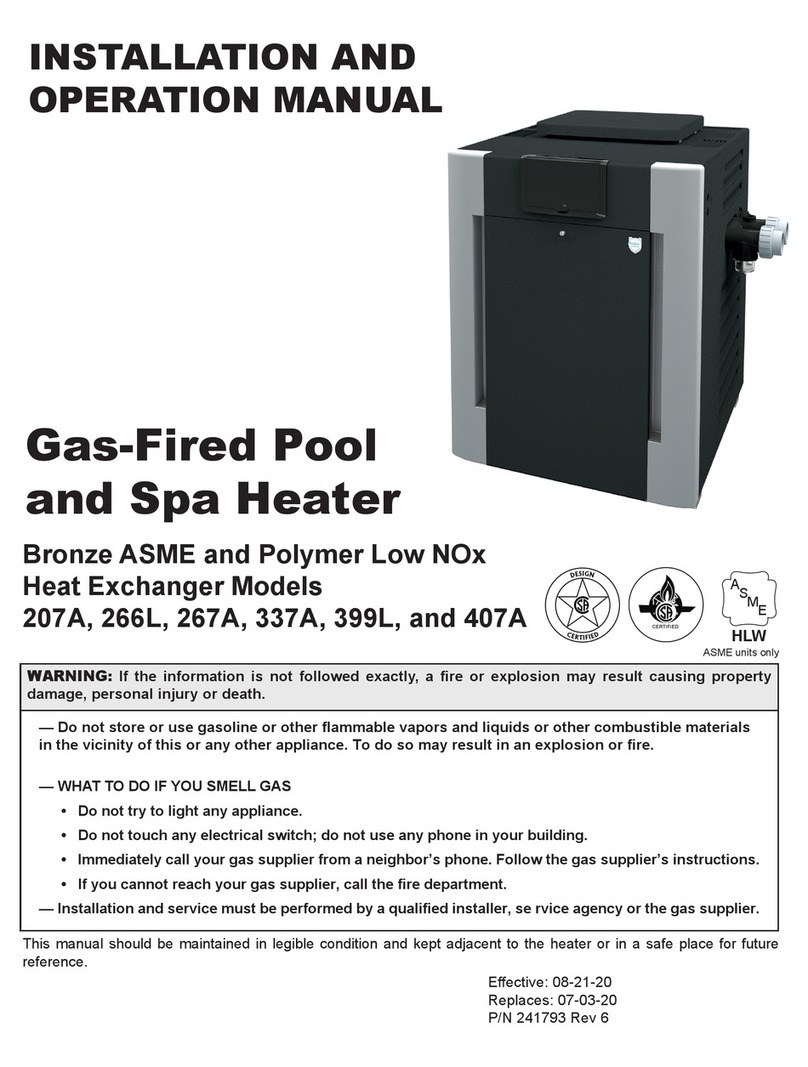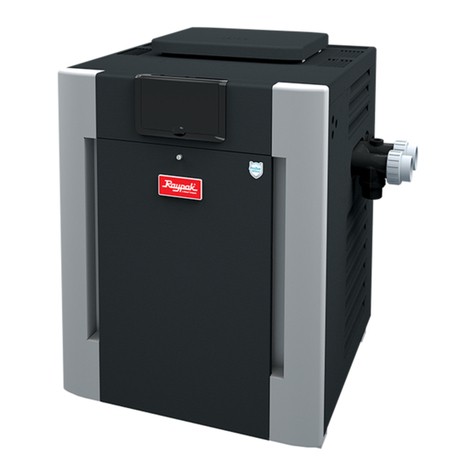
4
2. BEFORE INSTALLATION
Raypak strongly recommends that this manual be re-
viewed thoroughly before installing your XTherm heater.
Please review the General Safety information before
installing the heater. Factory warranty does not apply to
heaters that have been improperly installed or operated.
Refer to the warranty at the back of this manual.
Installationandservicemustbeperformedbyaqualied
installer, service agency or gas supplier. If, after reviewing
this manual, you still have questions which this manual
does not answer, please contact your local Raypak
representative or visit our website at www.raypak.com.
NOTE: Raypak recommends laying out and installing the
vent system before installing water piping. This will ensure
that the venting system and associated components will
Thank you for purchasing a Raypak product. We hope you
willbesatisedwiththehighqualityanddurabilityofour
equipment.
2.1.
On receipt of your heater it is suggested that you visually
check for external damage to the shipping crate. If the
crateisdamaged,makeanotetothateectontheBillof
Lading when signing for the shipment. Next, remove the
heater from the shipping packaging. Report any damage
to the carrier immediately.
On occasion, items are shipped loose. Be sure that you
receive the correct number of packages as indicated on
the Bill of Lading.
Claimsforshortagesanddamagesmustbeledwiththe
carrier by consignee. Permission to return goods must
be received from the factory prior to shipping. Goods
returned to the factory without an authorized Returned
Goods Receipt number will not be accepted. All returned
goods are subject to a restocking charge.
When ordering parts, you must specify the model and
serial number of the heater. When ordering under warranty
conditions, you must also specify the date of installation.
Purchased parts are subject to replacement only under the
manufacturer’s warranty. Debits for defective replacement
parts will not be accepted. Parts will be replaced in kind
only per Raypak’s standard warranties.
2.2.
Themodelidenticationnumberandheaterserialnumber
are found on the rating plate located on the rear jacket
panel of the heater.
The model number will have the form H7 or similar
dependingontheheatersizeandconguration.
• Theletter(s)intherstgroupofcharactersidenties
the application (H=Hydronic Heating, WH=Water
Heating,P=PoolHeating).
• Thenumberwhichfollowsidentiestheringmode
(7=electronicmodulation).
• The second group of characters identies the size
of the heater (the four numbers representing the
approximateMBTUHinput),and,whereapplicable,a
letter, indicating the manufacturing series.
2.3.
2.3.1. Standards
• ANSI Z21.13 · CSA 4.9 - latest edition, Gas-Fired Hot
Water Heaters
• CAN 3.1 - latest edition, Industrial and Commercial
Gas-Fired Package Heaters
• ANSI Z21.10.3 · CSA 4.3 - latest edition, Gas Water
Heaters
• ANSI Z21.56 · CSA 4.7 - latest edition, Gas-Fired Pool
Heaters
• SCAQMD Rule 1146.2
• Low-leadcontent(<.25%)CSA-certied
All Raypak heaters are National Board registered, and
design-certied and tested by the Canadian Standards
Association(CSA)fortheU.S.andCanada.Eachheateris
constructed in accordance with Section IV of the American
SocietyofMechanicalEngineers(ASME)HeaterPressure
Vessel Code and bears the applicable ASME stamp. H
models bear the "H" stamp. WH and P models bear the
"HLW" stamp. This heater also complies with the latest
edition of the ASHRAE 90.1 Standard.
AAWARNING: Altering any Raypak pressure vessel by
installing replacement heat exchangers, or any ASME
parts not manufactured and/or approved by Raypak will
instantly void the ASME and CSA ratings of the vessel and
any Raypak warranty on the vessel. Altering the ASME or
CSA ratings of the vessel also violates national, state, and
local approval codes.
2.4. Installations at Elevation
Ratedinputsaresuitableforupto2000ft(610m)elevation
without de-rating. Consult your local representative or
thefactoryforinstallationsataltitudes over2000ft (610
m) above sea level. No hardware changes are required
to the heaters for installations up to 10,000 ft (3,050 m)
(adjustmentsmayberequired).Aderateofupto4%per
1000ft(305m)mayapply.
